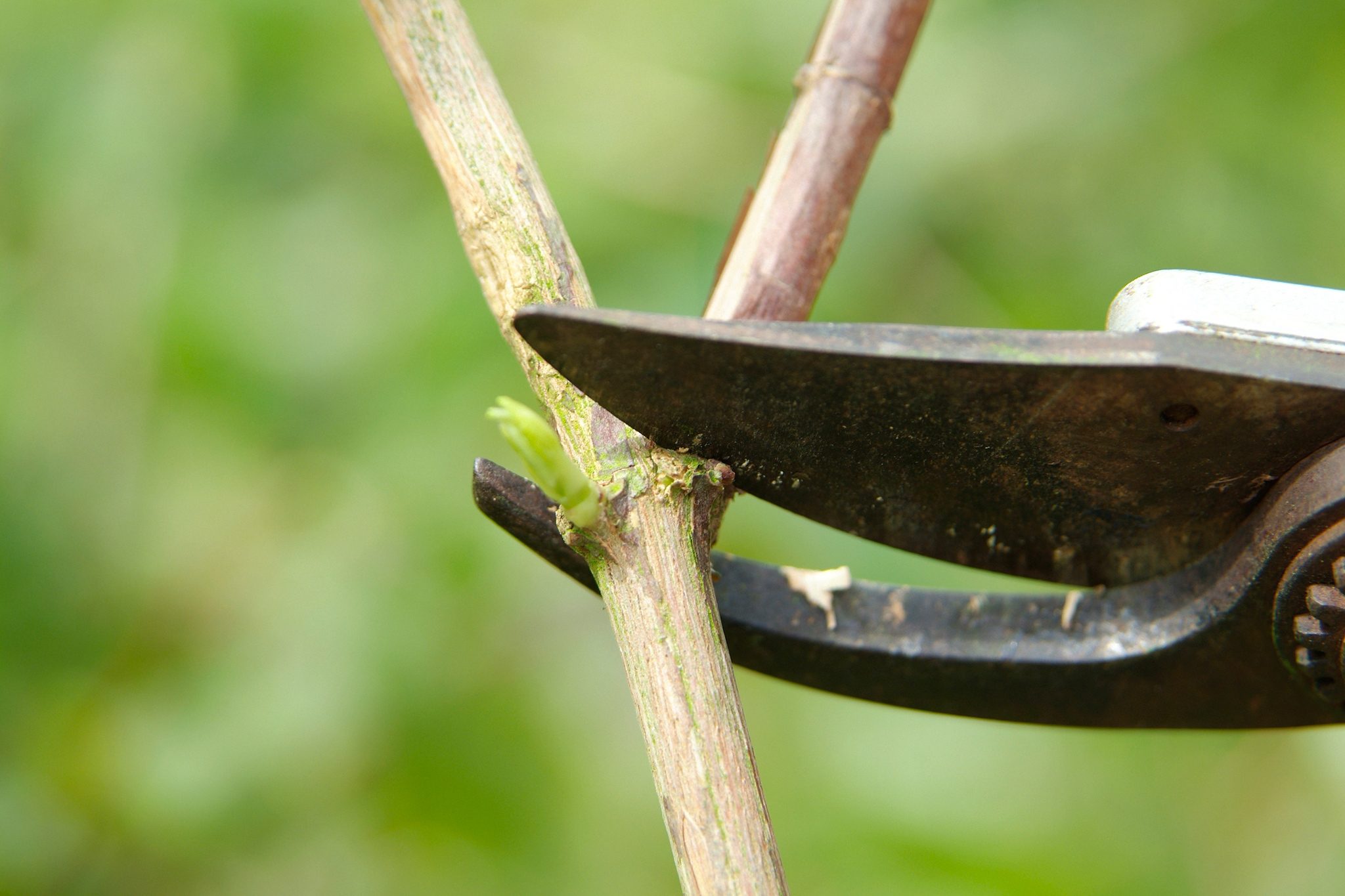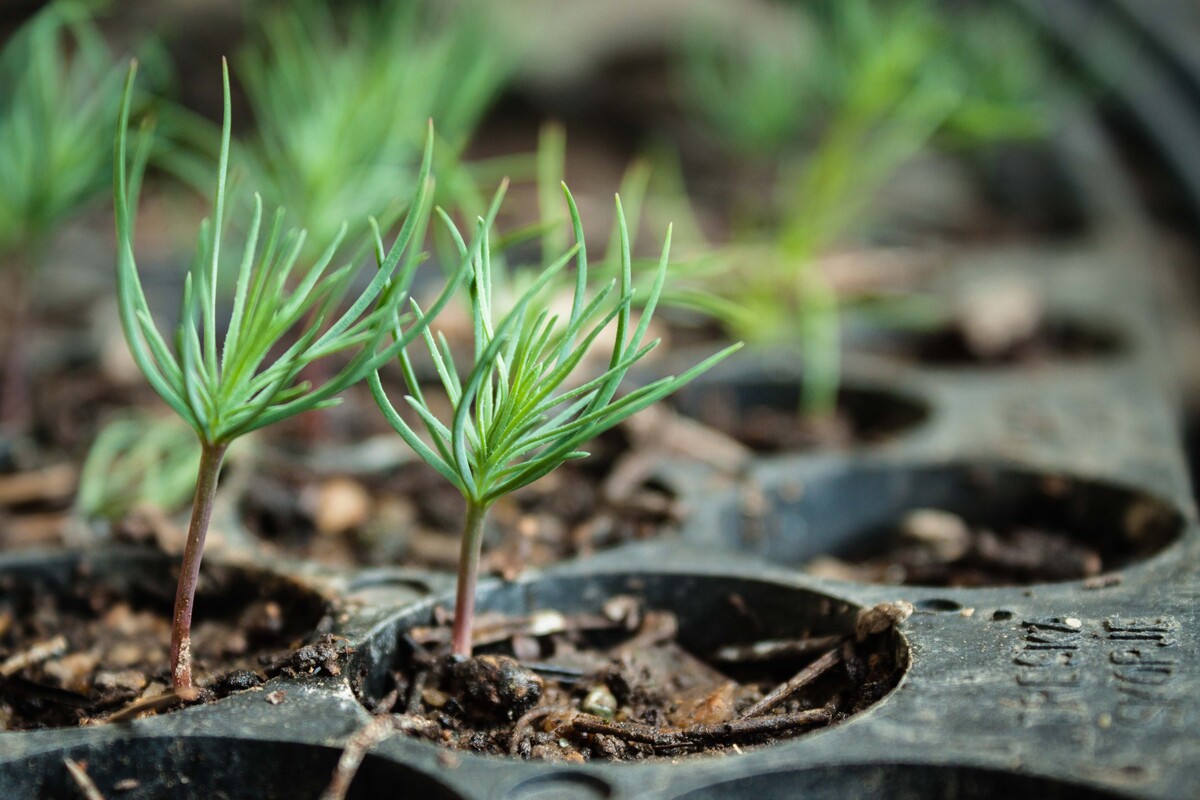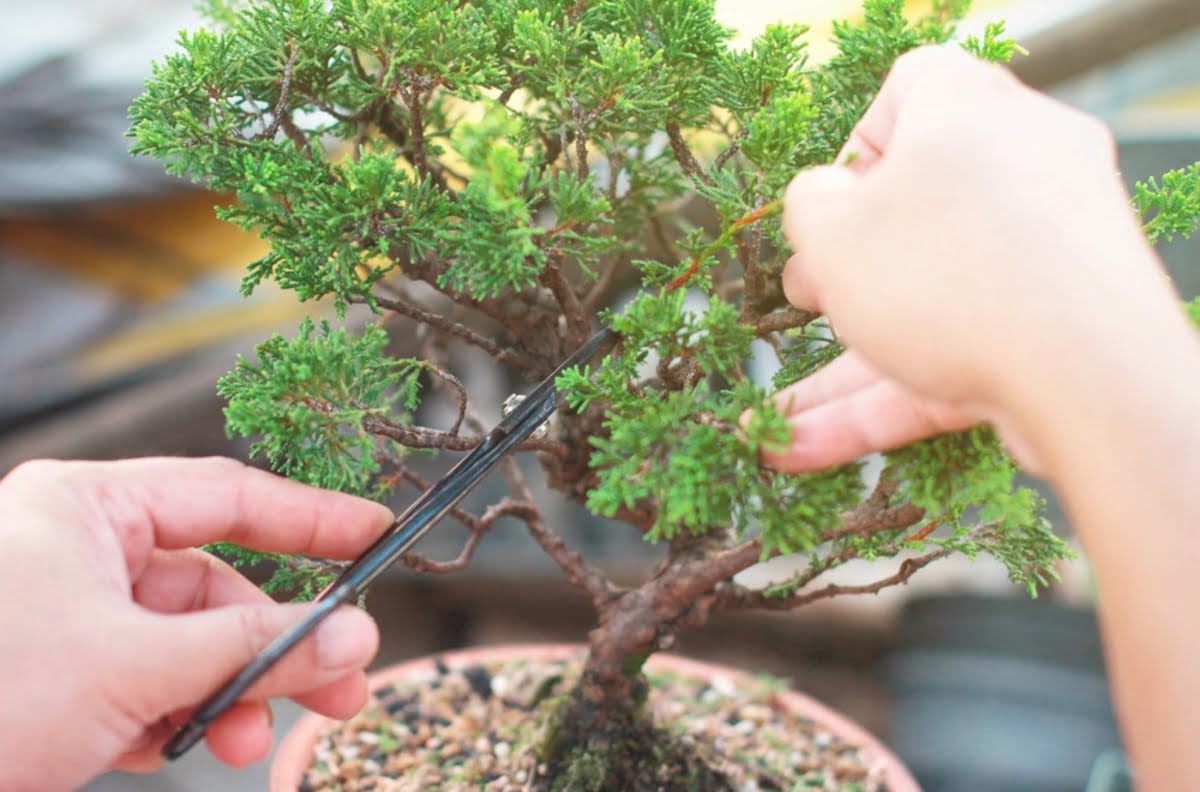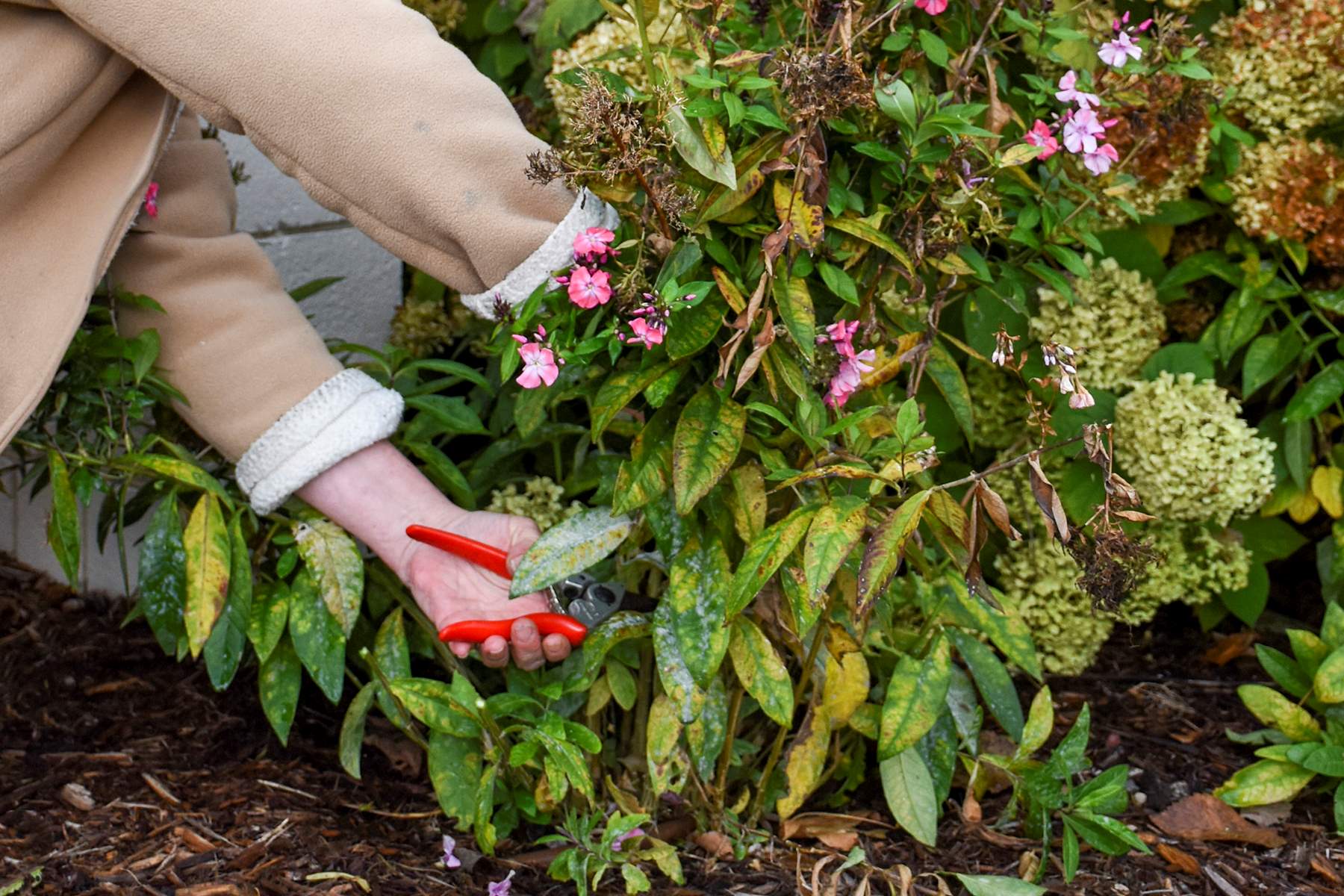Home>Types of Gardening>Ornamental Gardening>When To Cut A Bonsai Tree


Ornamental Gardening
When To Cut A Bonsai Tree
Modified: January 22, 2024
Learn when and how to cut a bonsai tree in this comprehensive guide on ornamental gardening. Discover the best practices for maintaining the shape and health of your bonsai tree.
(Many of the links in this article redirect to a specific reviewed product. Your purchase of these products through affiliate links helps to generate commission for Chicagolandgardening.com, at no extra cost. Learn more)
Table of Contents
Introduction
Welcome to the wonderful world of ornamental gardening! If you have a passion for cultivating beauty and creating visually stunning landscapes, then ornamental gardening is the perfect avenue for you. Within this expansive field, one aspect that holds particular intrigue is the art of bonsai tree cutting. Pruning bonsai trees not only allows for the maintenance of their size and shape but also unlocks their hidden potential, resulting in exquisite and captivating miniature trees.
However, cutting a bonsai tree is not a task to be undertaken lightly. It requires careful thought and consideration, as each cut impacts the tree’s future growth and aesthetic appeal. To guide you in your pursuit of mastering the art of bonsai tree cutting, this article will delve into the various factors to consider before making the decision to prune your bonsai tree, the techniques and tools required for a successful cut, as well as a step-by-step guide to achieve optimal results.
Whether you are a seasoned bonsai enthusiast or a beginner venturing into the world of ornamental gardening, understanding when and how to cut your bonsai trees is essential. By learning the principles and techniques behind bonsai tree cutting, you can transform your miniature trees into living works of art, showcasing balance, harmony, and the essence of nature.
Factors to Consider
Before embarking on the task of cutting a bonsai tree, it is crucial to consider several key factors. These factors will inform your decision-making process and ensure that the pruning is done at the appropriate time for maximum benefit to the tree’s health and aesthetics.
Size and Shape: The first factor to consider is the size and shape of the bonsai tree. Assess whether the tree has reached the desired size and shape you envision. If it has, cutting should be done sparingly to maintain its current form. Conversely, if the tree has grown larger than desired, pruning can be used to reduce its size and create a more compact appearance.
Health and Vigor: The health and vigor of the bonsai tree should be carefully evaluated before deciding to cut. If the tree is experiencing any signs of disease or weakness, it is advisable to postpone pruning until it has regained its vitality. Cutting a sick or weak tree can further stress it and impede its recovery.
Aesthetic Appeal: Consider the overall aesthetic appeal of the bonsai tree. Are there any branches that extend too far or disrupt the tree’s visual balance? Cutting these branches can enhance the tree’s appearance, making it more pleasing to the eye. Additionally, consider the tree’s overall structure and identify any areas that could benefit from pruning to create a more harmonious and natural bonsai shape.
Training Goals: If you have specific training goals for your bonsai tree, such as promoting branch development or creating more defined foliage pads, cutting becomes an integral part of the training process. Understanding your training objectives will aid in determining when and how to make the necessary cuts.
Seasonal Considerations: The season in which you plan to cut your bonsai tree is an important factor to consider. In general, it is best to avoid cutting during periods of active growth, as this can inhibit the tree’s ability to heal and may lead to excessive stress. Late winter or early spring, before new growth begins, is often the most suitable time for pruning.
By carefully considering these factors before cutting your bonsai tree, you can ensure that the pruning process is undertaken with precision and purpose, resulting in a healthy and aesthetically pleasing miniature tree.
Size and Shape
When it comes to bonsai trees, size and shape are two crucial aspects that contribute to their aesthetic appeal. The size of a bonsai tree can vary greatly, from miniature versions that fit in the palm of your hand to larger specimens that stand several feet tall. The shape of the tree, known as its “style,” further enhances its visual impact. Common bonsai styles include formal upright, informal upright, slanting, cascade, and semi-cascade.
Before deciding to cut your bonsai tree, take a moment to assess its size and shape. Does it match your desired vision? If the tree has reached the size and proportion that you find pleasing, pruning should be limited to maintaining its current form. This involves carefully trimming any stray branches or foliage that detracts from the tree’s overall shape.
On the other hand, if your bonsai tree has grown larger than you intended, cutting becomes necessary to reduce its size and create a more compact appearance. This can be achieved by strategically removing branches and foliage to create a balanced and harmonious structure. Keep in mind that while cutting can control the size of your bonsai tree, it should be done gradually and with caution to avoid stressing the tree.
In terms of shape, consider if there are any branches that extend too far or disrupt the tree’s visual balance. These branches can be trimmed to maintain the overall shape and symmetry of the tree. Furthermore, closely examine the tree’s structure and identify any areas that could benefit from pruning to create a more defined and aesthetically pleasing bonsai shape.
Remember, size and shape are subjective, and the vision for your bonsai tree may differ from others. It is important to spend time studying and evaluating your tree, envisioning the size and shape that aligns with your preferences. By carefully considering the size and shape of your bonsai tree, you can make informed decisions regarding pruning and ensure that it reflects your desired aesthetic outcome.
Health and Vigor
The health and vigor of your bonsai tree are fundamental considerations when it comes to pruning. Before engaging in any cutting, it is essential to evaluate the overall well-being of the tree. Pruning a sick or weak bonsai tree can exacerbate its condition and hinder its ability to recover.
Take the time to observe your bonsai tree closely and look for any signs of disease, pest infestation, or weakness. Common indicators include wilting or yellowing leaves, unusual discoloration or spots on foliage, visible signs of pests, and stunted or lack of new growth. If you notice any of these signs, it is advisable to postpone pruning until the tree is in a healthier state.
Prioritize the health and vigor of your bonsai tree by providing the necessary care and attention it requires. This includes watering appropriately, maintaining a balanced fertilization regimen, ensuring adequate light exposure, and practicing proper hygiene measures to prevent the spread of diseases. By fostering a healthy environment for your bonsai tree, you lay the groundwork for successful pruning and encourage its overall well-being.
It is worth noting that while pruning can promote healthier growth and improve the overall vitality of a bonsai tree, it should not be used as a remedy for severe health issues. If your bonsai tree is experiencing significant health problems, seek advice from a knowledgeable bonsai professional or horticulturist who can provide appropriate guidance and treatment.
By prioritizing the health and vigor of your bonsai tree, you ensure that it is in the optimal condition for any cutting. Pruning a healthy bonsai tree allows for its energy and resources to be directed towards new growth and development, resulting in a vibrant and flourishing miniature tree.
Aesthetic Appeal
One of the primary goals of bonsai tree cutting is to enhance the aesthetic appeal of the tree. Bonsai trees are admired for their beauty and the illusion of maturity and age that they exude. To achieve this desired aesthetic, it is crucial to carefully consider the visual aspects of your bonsai tree and make pruning decisions accordingly.
Begin by examining your bonsai tree from various angles. Look for branches that may extend too far or disrupt the overall balance of the tree. These branches can be pruned to maintain a more compact and visually appealing structure. Additionally, consider the overall symmetry and proportion of the tree. Are there any areas that appear lacking or unbalanced? Pruning can help to rectify these imbalances and create a more harmonious composition.
When pruning for aesthetic appeal, it is important to embrace the natural growth habits and characteristics of your bonsai tree. Strive for a balance between creativity and a sense of authenticity in your pruning decisions. Pay attention to the natural movement and flow of branches, as well as the distribution of foliage. Emphasize these unique features and aim to create a bonsai tree that captures the essence of nature.
Another important aspect of aesthetic pruning is achieving defined foliage pads. These pads create the illusion of fullness and maturity in a miniature representation of a tree. By selectively cutting branches to encourage dense foliage growth in specific areas, you can create distinct and eye-catching foliage pads that contribute to the overall aesthetic beauty of the bonsai tree.
Always keep in mind that bonsai tree cutting is an art form that requires patience, skill, and a keen eye for detail. The aesthetic appeal of your bonsai tree should reflect your personal taste and artistic vision. Take the time to study and appreciate different bonsai styles and aesthetics, and let your creativity guide your pruning decisions as you strive to create a visually stunning masterpiece.
By carefully considering the aesthetic appeal of your bonsai tree and making intentional pruning choices, you can transform a simple tree into a captivating work of art, evoking a sense of tranquility and beauty.
Training Goals
Pruning plays a crucial role in achieving your training goals for your bonsai tree. Training a bonsai tree involves shaping and directing its growth to create a specific aesthetic or mimic the natural forms found in nature. Before making any cuts, it is important to have a clear understanding of your training objectives.
One common training goal is to promote branch development. By selectively pruning branches, you can encourage new growth in specific areas, fostering a more balanced and visually appealing tree structure. This is particularly important for bonsai trees with sparse or uneven branch distribution.
Creating defined foliage pads is another popular training objective. Foliage pads are clusters of dense foliage that give the impression of maturity and fullness. Through careful pruning, you can shape and refine these foliage pads to achieve the desired look. This can involve cutting back long branches and encouraging growth in specific areas to create distinct and well-defined foliage pads.
Training a bonsai tree to display a particular style is also a common goal. Bonsai styles such as formal upright, informal upright, slanting, cascade, and semi-cascade each have their own unique characteristics and aesthetic appeal. Pruning techniques are used to sculpt and shape the tree to match the desired style. Careful consideration should be given to the proportions and overall form of the tree to achieve an authentic representation of the chosen style.
In addition to shaping the branches and foliage, training goals may also involve developing the root system. Techniques such as root pruning and repotting are essential for maintaining the health and growth of the roots, which in turn has a direct impact on the overall growth and vigor of the bonsai tree.
Having a clear understanding of your training goals is paramount to making informed pruning decisions. Take the time to study various bonsai styles and techniques, and consider how they align with your personal preferences and the characteristics of your bonsai tree. By setting specific training objectives, you can guide the pruning process to achieve the desired results and create a bonsai tree that reflects your unique vision and style.
Seasonal Considerations
When it comes to pruning your bonsai tree, timing is of the essence. The season in which you choose to cut your tree can greatly impact its health, growth, and ability to recover. Understanding the seasonal considerations for bonsai tree pruning is key to achieving optimal results.
In general, it is best to avoid pruning during periods of active growth. Pruning during this time can disrupt the tree’s energy allocation and may lead to excessive stress. Additionally, fresh wounds from cuts made during active growth are more susceptible to infection and disease. Therefore, it is recommended to refrain from pruning during the spring and summer months when your bonsai tree is actively growing and producing new shoots and foliage.
Instead, focus your pruning efforts during the dormant season. Late winter or early spring, before new growth begins, is often considered an ideal time for pruning bonsai trees. During this time, the tree is still in a dormant state, which minimizes stress and allows it to heal more effectively.
However, it is important to note that the timing of pruning can vary depending on the species of your bonsai tree. Some species may benefit from pruning in late summer or early autumn, as this allows sufficient time for the wounds to heal before winter dormancy sets in. It is always recommended to research the specific care requirements of your bonsai tree species to determine the most appropriate pruning season.
Another factor to consider is the local climate. Bonsai trees in colder regions may have a shorter growing season and may require pruning earlier in the year to avoid cutting into active growth. Conversely, bonsai trees in warmer climates may have a longer growing season, allowing for a slightly extended pruning period.
In addition to considering timing, it is important to ensure that you have the proper pruning tools and techniques for the specific season. Clean, sharp tools will result in cleaner cuts and minimize the risk of damage to the tree. Furthermore, during the pruning process, be sure to remove any dead or diseased branches and clean the tools between cuts to prevent the spread of contamination.
By understanding the seasonal considerations for bonsai tree pruning, you can ensure that your cuts are made at the optimal time for the health and vitality of your tree. Choose the appropriate season, prepare the necessary tools, and approach pruning with care and precision.
Signs that indicate the need for pruning
Knowing when to prune your bonsai tree is essential for maintaining its health, aesthetics, and growth. While regular pruning is an integral part of bonsai care, it is crucial to identify specific signs that indicate the need for pruning. By recognizing these signs, you can address potential issues and promote the overall well-being of your bonsai tree.
Overgrown Branches: If you notice branches that have grown excessively long or extend beyond the desired shape of your bonsai tree, it is a clear indication that pruning is required. Trimming these overgrown branches will help maintain the tree’s size, shape, and overall balance.
Crossing or Rubbing Branches: When the branches of your bonsai tree cross or rub against each other, it can lead to damage, restricted growth, and potential disease. Pruning overlapping branches will alleviate the problem and prevent further issues down the line.
Diseased or Damaged Branches: Dead, diseased, or damaged branches not only compromise the aesthetics of your bonsai tree but also pose a risk to its overall health. Pruning these branches as soon as possible will help prevent the spread of diseases, maintain the tree’s vigor, and encourage new growth.
Dense Foliage: If your bonsai tree has excessive foliage that obscures the branch structure or prevents light from reaching the inner parts of the tree, it is advisable to thin out the foliage. By selectively pruning excess foliage, you improve air circulation, allow light to permeate the branches, and promote healthier growth.
Unbalanced Growth: Uneven or imbalanced growth is a common issue in bonsai trees. If you notice that one area of the tree is significantly fuller or denser than the rest, you can use pruning to redistribute the growth and achieve a more balanced appearance.
Branches Growing in Undesired Locations: Bonsai trees often produce branches in areas that may disrupt the desired shape or balance of the tree. If you see branches growing in undesirable locations, such as low on the trunk or from the inside of curves, pruning these branches will help maintain the tree’s intended design.
Regularly inspect your bonsai tree for these signs that indicate the need for pruning. Additionally, make sure to observe other indicators, such as reduced foliage density, decreased flowering or fruit production, or any abnormalities in growth patterns. Addressing these issues through timely and appropriate pruning will ensure the long-term health and attractiveness of your bonsai tree.
Techniques and Tools for Cutting
When it comes to cutting your bonsai tree, employing the right techniques and using the proper tools is crucial for achieving clean and effective results. Understanding these techniques and tools will help you approach the pruning process with confidence and precision.
Techniques:
1. Upright Style Pruning: For bonsai trees with an upright style, such as formal upright or informal upright, the primary focus is on maintaining the natural growth pattern and enhancing the overall shape. Use pruning shears to trim branches in a way that follows the tree’s natural silhouette.
2. Wiring: Wiring is a technique used to bend and redirect the branches of a bonsai tree. By carefully wrapping copper or aluminum wire around the branches, you can shape them into the desired position. However, exercise caution to avoid damaging the bark and remove the wire once the branches have set in the desired position.
3. Pinching: Pinching involves using your fingers or bonsai scissors to remove the terminal buds or soft tips of branches. This helps to encourage back budding and stimulate the growth of smaller, compact foliage near the branch nodes.
4. Branch Selection: When pruning, consider the branches’ position, direction, and overall contribution to the tree’s design. Remove branches that disrupt the tree’s shape or are redundant, while retaining those that contribute to the desired aesthetic.
Tools:
1. Pruning Shears: Pruning shears, also known as bonsai scissors, are essential for cutting branches and foliage. Choose a pair with a sharp, bypass blade for clean cuts and opt for a size that matches your hand comfortably.
2. Concave Branch Cutter: A concave branch cutter is a specialized tool with a rounded shape that makes clean cuts close to the trunk. This tool is ideal for removing larger branches without damaging the tree.
3. Knob Cutter: A knob cutter is used for removing larger knobs or protrusions left after cutting branches. Its concave shape allows for smooth removal and helps promote faster healing of the wound.
4. Wire Cutters: Wire cutters are specifically designed to cut and remove wires used for training and shaping bonsai trees. They have sharp blades that can easily cut through the wire without damaging the branches.
5. Root Pruning Tools: For root pruning, various tools such as root shears, root hooks, and root rakes are used to delicately trim the roots and maintain a healthy root system.
Remember to use clean and sterilized tools to prevent the spread of diseases or pests. Additionally, ensure that your tools are kept sharp to ensure clean cuts and minimize damage to the tree. Regularly clean and oil your tools to maintain their functionality and prevent rust.
By utilizing the appropriate techniques and using the right tools, you can effectively prune your bonsai tree, shaping it into a stunning miniature representation of nature’s beauty.
Step-by-Step Guide to Cutting a Bonsai Tree
Pruning your bonsai tree is a careful and deliberate process. To ensure successful results, follow this step-by-step guide:
Step 1: Assess the tree: Take a close look at your bonsai tree and evaluate its size, shape, health, and overall aesthetic. Identify any areas that require pruning or adjustment.
Step 2: Gather the necessary tools: Prepare your pruning tools, including pruning shears, concave branch cutters, knob cutters, wire cutters, and any other tools specific to your pruning needs. Ensure they are clean and sharp.
Step 3: Determine the cuts: Based on your assessment, decide which branches need to be pruned or trimmed. Consider the size, direction, and position of the branches, as well as the overall design and training goals of your bonsai tree.
Step 4: Make the cuts: Using the appropriate tool for each cut, carefully remove the selected branches. Make clean cuts at a slight angle just above the branch collar, taking care not to damage the surrounding bark or trunk.
Step 5: Thin and shape: Thin out the foliage as required to maintain an appropriate density. This will allow for better air circulation and light penetration, promoting healthy growth. Additionally, shape the branches by removing undesired twigs, foliage, or crossing branches.
Step 6: Wire and reposition: If necessary, wire the branches to guide their growth and create the desired shape or style. Be gentle to avoid damaging the branches or bark. Allow the wire to remain in place until the branches set in the desired position, and then remove it carefully.
Step 7: Address the roots: If it’s the appropriate time for root pruning, carefully trim the roots using specialized root pruning tools. Remove any excessive or damaged roots, ensuring that the cuts are clean and minimal.
Step 8: Monitor and care: After the pruning process, closely monitor the tree’s response. Provide proper care, including adequate watering, fertilization, and protection from harsh elements, to support its recovery and growth.
Step 9: Repeat as necessary: Pruning is an ongoing process in bonsai care. Repeat the necessary steps periodically to maintain the size, shape, and health of your bonsai tree. Regularly assess and adjust your pruning techniques to achieve the desired aesthetic and training goals.
Remember, patience and observation are key when cutting a bonsai tree. Take your time, be attentive to the tree’s needs, and allow it to adjust and grow after each pruning session. With practice and experience, you will develop the skills to create a beautiful and well-maintained bonsai masterpiece.
Conclusion
Pruning plays a vital role in the art of bonsai tree cultivation, allowing you to shape and refine your miniature tree into a living work of art. By considering factors such as size and shape, health and vigor, aesthetic appeal, training goals, and seasonal considerations, you can make informed decisions regarding when and how to cut your bonsai tree.
Understanding the techniques and tools for cutting bonsai trees is crucial. Techniques such as upright style pruning, wiring, pinching, and branch selection enable you to shape and train your bonsai tree according to your vision. Utilizing the right tools, such as pruning shears, concave branch cutters, and wire cutters, ensures clean and precise cuts.
Following a step-by-step guide, beginning with assessing the tree and ending with monitoring and caring for it, allows you to approach the pruning process with confidence and achieve the desired results. Regular attention to pruning, coupled with proper care and maintenance, helps to maintain the health, aesthetics, and overall growth of your bonsai tree.
Remember, bonsai tree cutting is a journey that requires patience, observation, and a deep appreciation for the beauty and serenity of nature. As you hone your skills and develop your bonsai tree, take joy in the artistry and transformative power of pruning. Let it be a source of inspiration and a testament to your dedication as you shape your unique bonsai masterpiece.




